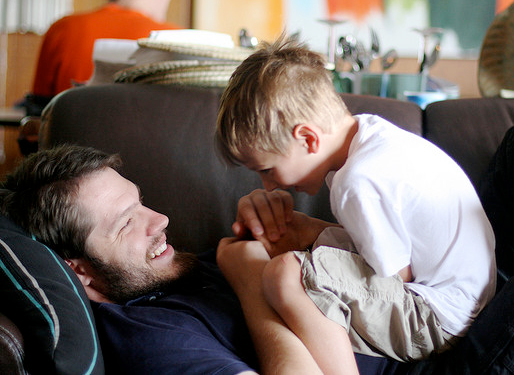Rationale
Adding to familiar sensory social routines and refining the routines based on your child’s responses can help keep her engaged and open to experiencing the positive emotions of social interactions.
Be alert to signs of waning interest (e.g., looking away, decreased response to your pauses, fussiness) and adjust your actions to maintain your child’s attention to your face and body. This may include adding new sensory social routines and using carefully chosen objects in joint activities.
Using objects to capture your child’s smile can add to the fun and learning if done thoughtfully. You should always have control of the object of interest and continue to operate it and pause for your child’s communication cues. Adding simple narration to your actions is useful. By being dramatic, enthusiastic, and responsive to your child’s communication attempts, objects can be useful tools to add to your repertoire.
 Watch this video for more ideas on how to “tune in” to your child during interactions:
Watch this video for more ideas on how to “tune in” to your child during interactions:
I know I am building and refining my social sensory routines when:
- I find it easier to read my child’s cues to vary, end, or transition to a new activity.
- My child participates by sending cues.
- I occasionally add objects for joint activities.
- I have added simple narration to our routines.
Back to Module 2 Step 3: Maximizing your child’s best energy level for learning


